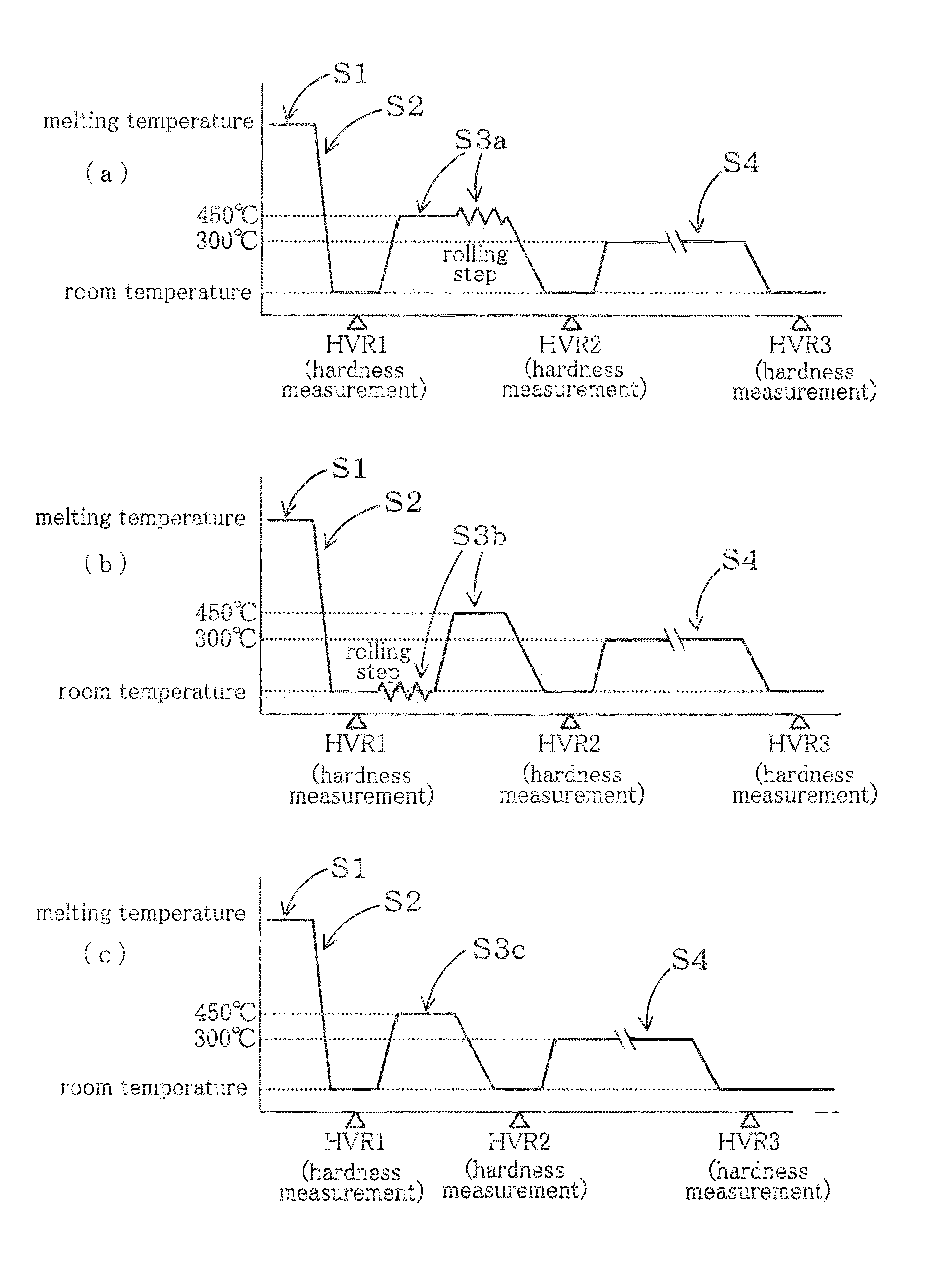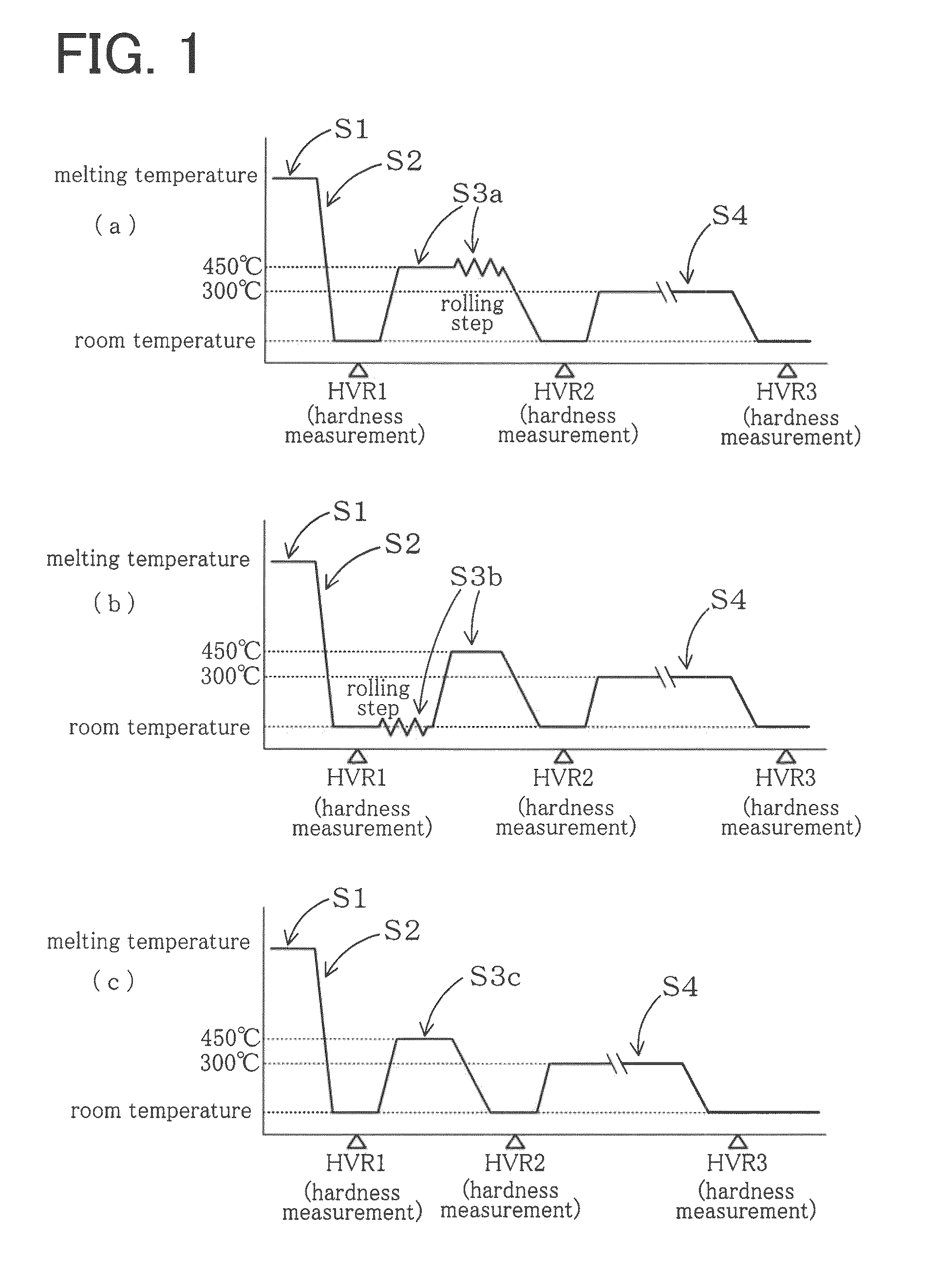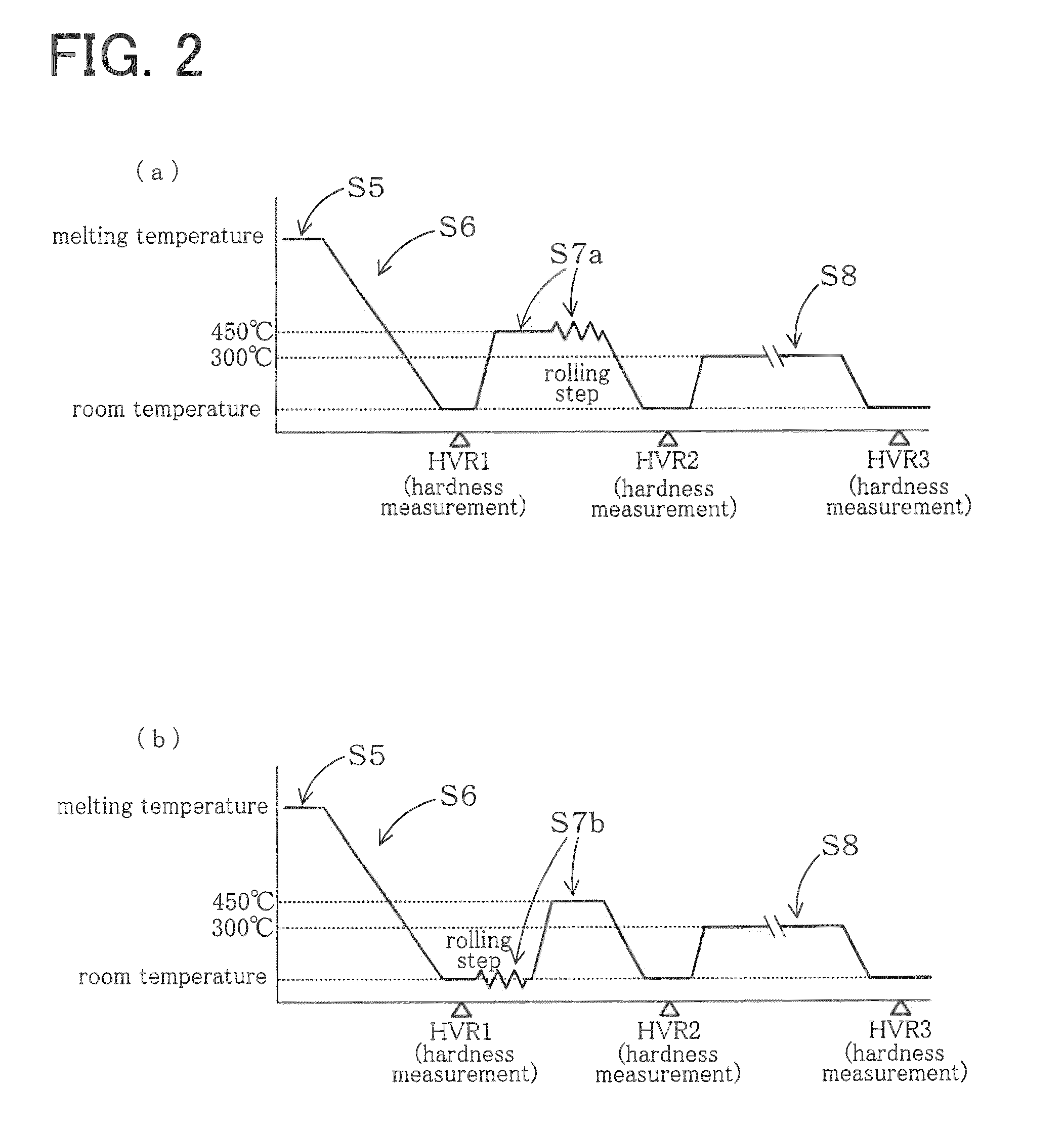Casted aluminum alloy and method for producing the same as well as aluminum alloy material and method for producing the same
a technology of casted aluminum alloy and aluminum alloy material, which is applied in the direction of manufacturing tools, foundry moulding apparatus, foundry patterns, etc., can solve the problems of reduced processability and corrosion resistance of 6000-system alloy, and it is difficult from the practical point of view to adapt the rolled aluminum alloy sheet made from such aluminum alloy, and achieves excellent strength, formability, corrosion resistance, and softening resistance. , the effect of low cos
- Summary
- Abstract
- Description
- Claims
- Application Information
AI Technical Summary
Benefits of technology
Problems solved by technology
Method used
Image
Examples
examples
[0179]Embodiment 1
[0180]In the present embodiment, casted aluminum alloys (continuously cast materials) made from aluminum alloys of a plurality of types of compositions were prepared as shown in Table 1 to Table 4, and softening resistance and the like were investigated to clarify superiority of the casted aluminum alloys of the present invention.
[0181]Alloy compositions, specific gravities, and cooling rates of the casted aluminum alloys (Examples 1 to 48) within the scope of the present invention are shown in Table 1 and Table 2.
[0182]Also, for the purpose of comparison, casted aluminum alloys (Comparative Examples 1 to 20, and Comparative Examples 28 to 37) made from aluminum alloys that are out of the component range defined in the present invention and casted aluminum alloys (Comparative Examples 21 to 27) produced at cooling rates that are out of the range defined in the present invention were prepared. Alloy compositions and specific gravities of these alloys are shown in Ta...
PUM
| Property | Measurement | Unit |
|---|---|---|
| particle diameter | aaaaa | aaaaa |
| particle diameter | aaaaa | aaaaa |
| thickness | aaaaa | aaaaa |
Abstract
Description
Claims
Application Information
 Login to View More
Login to View More - R&D
- Intellectual Property
- Life Sciences
- Materials
- Tech Scout
- Unparalleled Data Quality
- Higher Quality Content
- 60% Fewer Hallucinations
Browse by: Latest US Patents, China's latest patents, Technical Efficacy Thesaurus, Application Domain, Technology Topic, Popular Technical Reports.
© 2025 PatSnap. All rights reserved.Legal|Privacy policy|Modern Slavery Act Transparency Statement|Sitemap|About US| Contact US: help@patsnap.com



